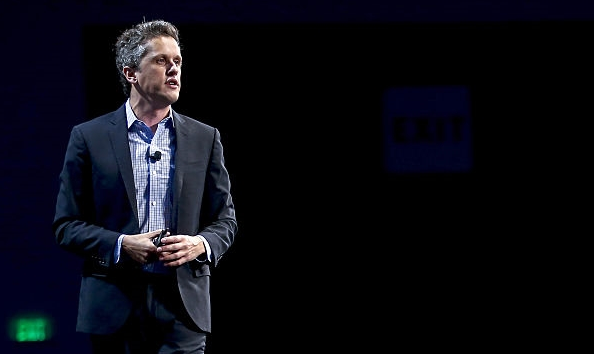Connections

Box CEO: Company Made ‘Solid Progress’ on Main Objectives in Q3
Story Highlights
Box achieved a few significant milestones in the third quarter, ended Oct. 31, as the company continued to focus on its three main objectives of delivering new products to further differentiate its offerings, driving platform adoption and expanding via strategic partnerships, according to CEO Aaron Levie.
In addition to achieving its first $100 million quarter, finishing the quarter with revenue of $102.8 million (up 31% year over year), Box grew its paying customer base to more than 69,000 businesses in the third quarter. That included new or expanded deployments with Canon, Hertz, Konica Minolta Japan, Southwest Airlines, and the U.S. Department of Treasury, Box said.
“We made solid progress against all three objectives in Q3,” Levie told analysts on a Nov. 30 earnings call. In new products, the company continued to make strides with its Box Zones initiative that was started in April and gives its enterprise customers the choice to store data regionally across Asia and Europe, helping businesses centralize critical content and enhance productivity, while addressing local data storage requirements.
Box Zones has been announced in several regions across Europe, Asia, and North America already and more regions will follow, Levie said, adding: “We’re only about one quarter into the product being fully available in just a couple of the regions. We just went live in the past few weeks in Australia as one of our newest regions; we’ll be going live soon in Canada and then we’ll continue to expand” to “more and more regions over time.”
Box Zones is “incredibly important due to one of the biggest barriers” for international companies adopting the cloud being data residency, he said. “While we have seen good traction internationally over the past few years in general, a lot of it hasn’t been in regulated industries, or in some cases, only a limited set of content from some of our customers,” he said. Box Zones enables the company to “unlock more of that growth and that opportunity,” he said.
Meanwhile, Box Governance, which allows enterprises to meet retention and compliance requirements in the cloud, “continues to show strong momentum as well,” he said. Box now has more than 500 Governance customers and 40% of third-quarter Governance deals came from new customers, he said. The company, in the third quarter, scored the largest Governance deal to date – a “$500,000-plus deal with a multinational pharmaceutical company,” he told analysts. In October, Box also added security classification functionality to Governance.
Box customers will now be able to automatically identify sensitive content in Box and enforce security policies based on a predetermined confidentiality level, Levie said.
Also, at the BoxWorks conference in September, the company announced the Box Relay workflow solution, its first product co-developed with IBM. Relay will make it easy for employees and businesses to build, track and automate their workflows with “all the security and collaboration benefits” of Box, Levie said on the call, adding: “We’re already seeing strong interest for Relay by organizations looking to automate workflows such as HR or customer onboarding processes and closing deals and contracts.”
Of the company’s second strategic objective, he said Box continued to “make significant progress” with Box Platform in the third quarter. With Box Platform, customers, partners and third-party developers can build custom applications on Box through the company’s application programming interfaces (APIs) and developer services, he said.
Box grew its developer community to more than 89,000 developers in the third quarter, he also said. One example he cited was a new Box customer that selected Box Platform to power an iPad application for thousands of its contractors.
The application allows technicians to capture photos and browse product information and specifications, which saves “significant dollars over a legacy application,” he said.
Box Platform and the company’s new products are all “significant growth drivers for us,” he said, noting that in the third quarter, about 50% of the deals over $100,000 included one of those new products.
Of Box’s third strategic objective, Levie noted that the company, at BoxWorks, announced a strategic partnership with Google to combine Box’s secure content management capabilities with Google’s productivity applications. The upcoming integration with Google Docs will enable customers to work seamlessly between Box and Google Docs, Google Sheet and Slides with Box acting as the centralized constant management solution, he said.
IBM — another strategic Box partner – “contributed significantly to our results this quarter, including eight six-figure deals and enabling their reseller network to go-to-market with Box,” he said. In addition to Box Relay, IBM was a “key partner” that helped Box “win our first significant international platform deal,” he said.
Box is also collaborating with Facebook on that company’s first enterprise product, Facebook Workplace, he said. In the coming months, Box will be working to “build several integrations that will enable seamless productivity and communication around content in Box,” he said.
The company is “more confident than ever in our ability to drive rapid growth and further operating leverage,” he also said.
Box narrowed its third-quarter loss to $38.2 million, or 30 cents a share, from $55.1 million, or 45 cents a share, in the same quarter a year ago. On a non-GAAP basis, its loss per share was 14 cents, “well ahead” of its own forecast and better than analysts had expected. But Box shares were down about 2.7% at $14.81 in late morning trading Dec. 1.









